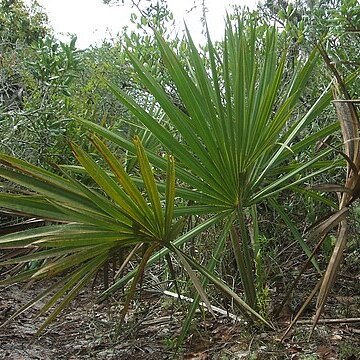A palm. The stems occur singly and are short and underground. They can be erect up to 2 m tall. There are 4-7 leaves. They are yellow-green with a prominent mid-vein. There are 25-50 leaflets. They are rigid and joined for a short distance at the base. There are threads along the edges. The flowering stalk is branched to 2 orders. The flowering stalks stick upwards and are shorter than the leaves. The fruit are almost round. They are 0.9-1.5 cm long and 0.8-1.3 cm wide. They are brownish black.

